Trading Diary
June 25, 2005
The Dow Industrial Average corrected sharply on strong volume and appears headed for a test of support at 10000. After increased selling last Friday, at [0], the index consolidated in a small pennant for 3 days before falling through resistance at 10550 on day [4]. Strong red candles and rising volume indicate an increasing element of fear: it took two days to reverse all gains made since May 18th.
Twiggs Money Flow (21-day) also formed a bearish divergence, similar to the Nasdaq and S&P 500.
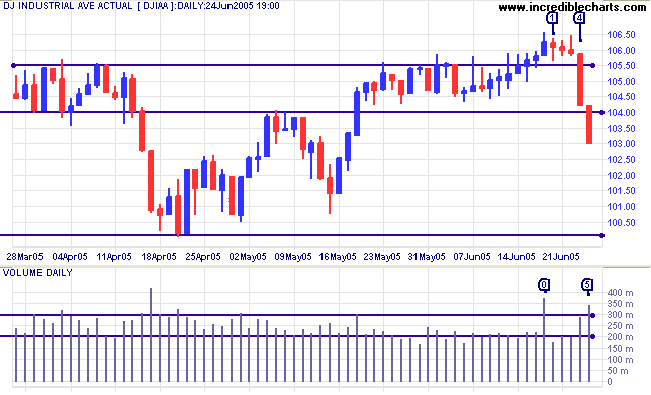
The latest sharp correction is likely to encounter buying support at 10000. If that is brushed aside, we will see the development of a strong primary down-trend, possibly testing support at 7500. Confirmation could be provided by a pull-back that respects resistance at 10000 or by a fall below 9750, the October 2004 low.
On the other hand, if we see strong buying support at 10000, with the index respecting support accompanied by strong volume (or making a false break that is quickly recovered), expect another test of resistance at 11000.
The index is building a broad base, as with the top of 1999 to 2001. Volatility is significantly lower, however, with fewer wide swings from above 11000 to below 10000 and vice versa. An eventual upside breakout cannot be dismissed but chances are decreasing with the declining yield on treasury bonds (see Treasury Yields below).
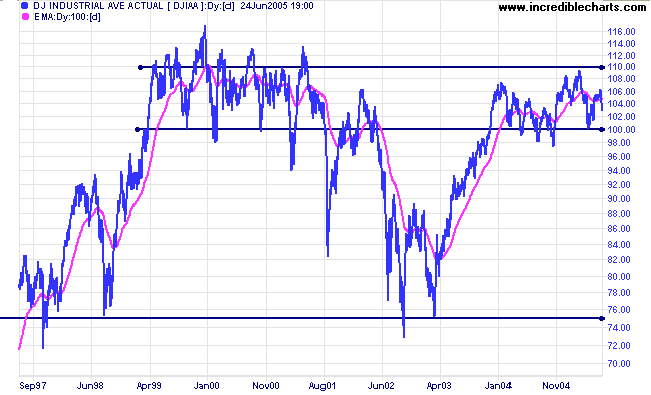
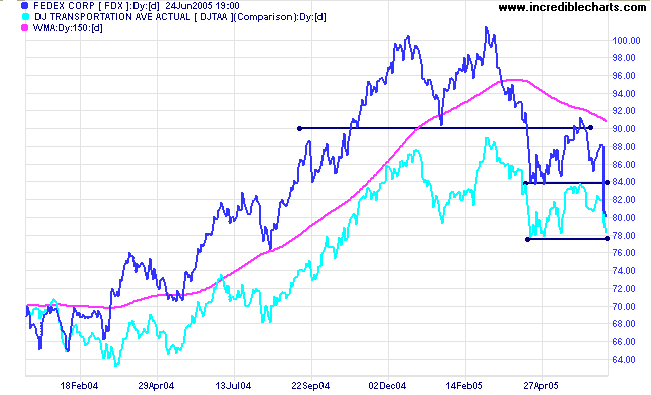
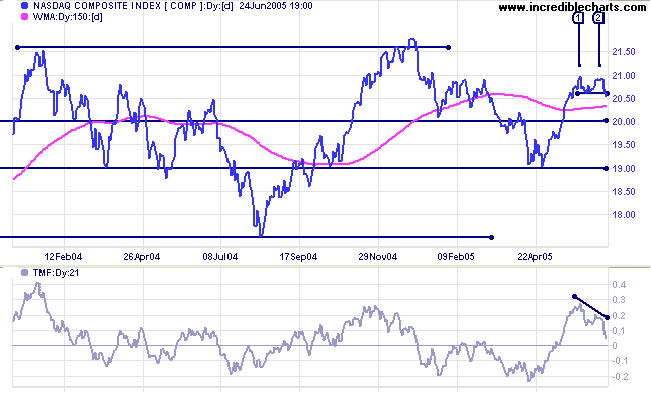
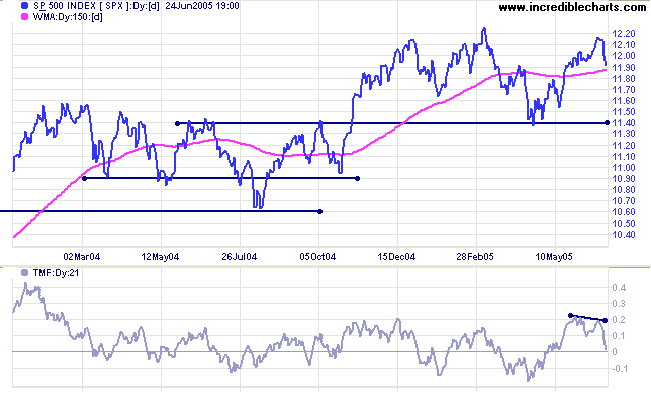
The yield on 10-year treasury notes has again broken below 4.0%; a close below 3.9% would confirm further weakness. Falling long-term yields are a sign that funds are flowing out of equities and into bonds. If the yield is driven lower, there should be a corresponding fall in Twiggs Money Flow on the major indices.
Short-term yields continue to rise, resulting in a declining yield differential (10-year T-notes minus 13-week T-bills); now below 1.0%. A bearish (long-term) sign for equities.
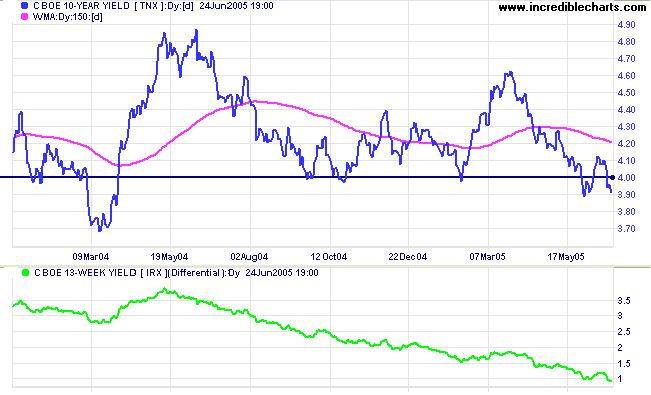
New York: Spot gold pulled back briefly to successfully test support at $435, adding confirmation of the large triangle breakout, before rallying to close at $440.00 on Friday. The target for the breakout is $476 (432 + (454 - 410)), though resistance can be expected at $450.
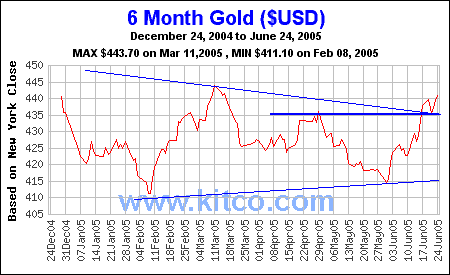
The All Ordinaries completed a bearish false break above the March 2005. Sellers took control on Monday [1], driving prices back below the new support level at 4260, with muted opposition from buyers. Strong support, however, emerged on Friday at [5], with a weak close and strong volume. Expect a rally to test resistance at the recent high. Failure to make a new high, in the week ahead, would be a strong bear signal. If a rally fails to materialize, with a close below Friday's low, expect a sharp drop to support at 3900.
I am obviously bearish about the All Ords' prospects, but a breakout above 4260, followed by a pull-back that respects the new support level, is still a possibility and would signal further gains, with a target of 4620 (4260 + (4260 - 3900)).
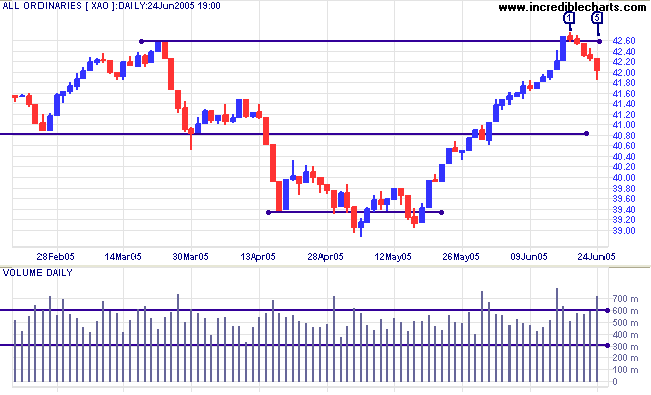
If the index falls below 3900, that would signal that a test of 3450 is likely, amounting to roughly a 50% retracement of the previous up-trend.
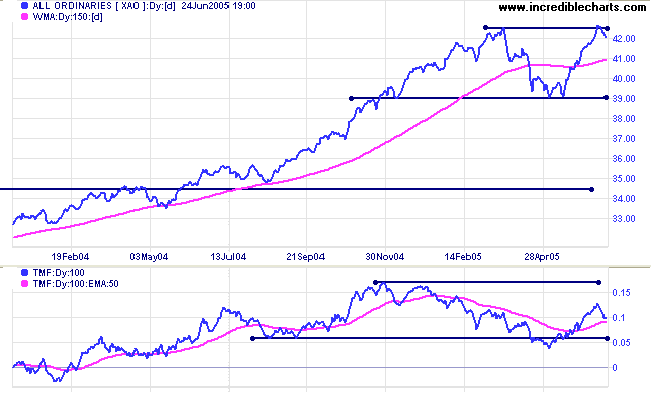
rather than what is so.
~ Daniel Kellog
as quoted by S.A Nelson in The ABC of Stock Speculation (1903).
Back Issues

Author: Colin Twiggs is a former investment banker with almost 40 years of experience in financial markets. He co-founded Incredible Charts and writes the popular Trading Diary and Patient Investor newsletters.
Using a top-down approach, Colin identifies key macro trends in the global economy before evaluating selected opportunities using a combination of fundamental and technical analysis.
Focusing on interest rates and financial market liquidity as primary drivers of the economic cycle, he warned of the 2008/2009 and 2020 bear markets well ahead of actual events.
He founded PVT Capital (AFSL No. 546090) in May 2023, which offers investment strategy and advice to wholesale clients.
